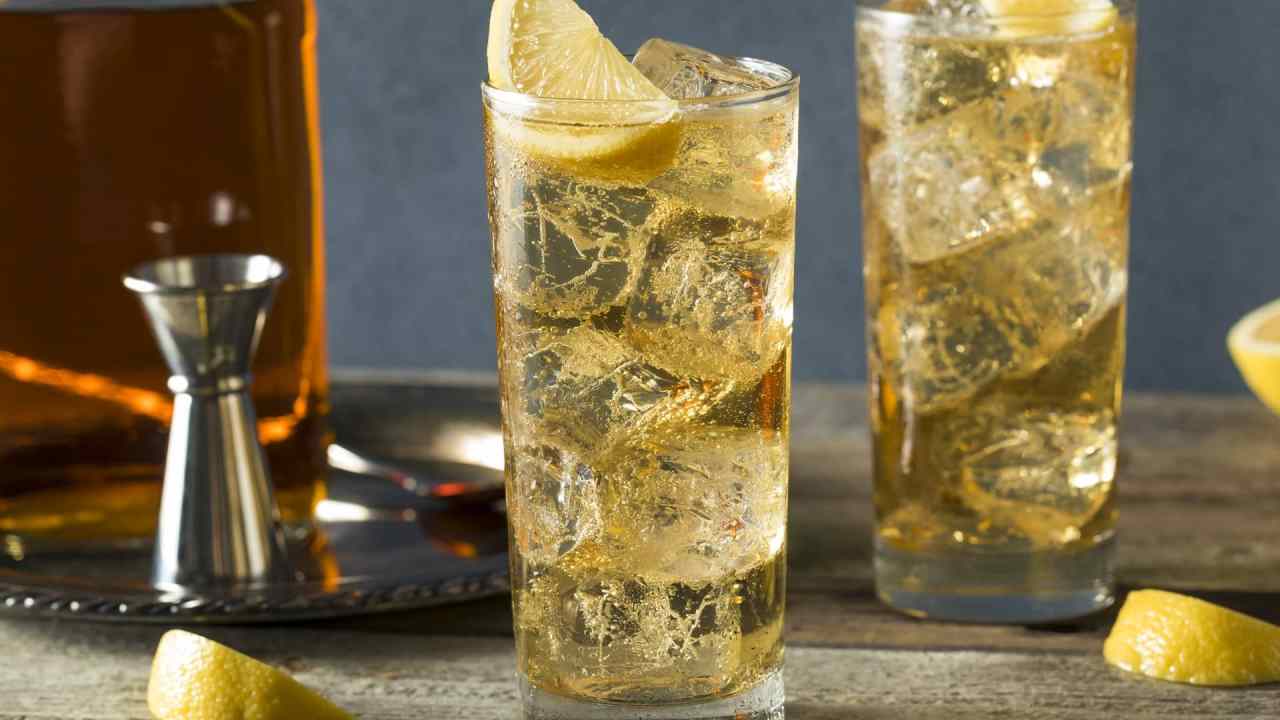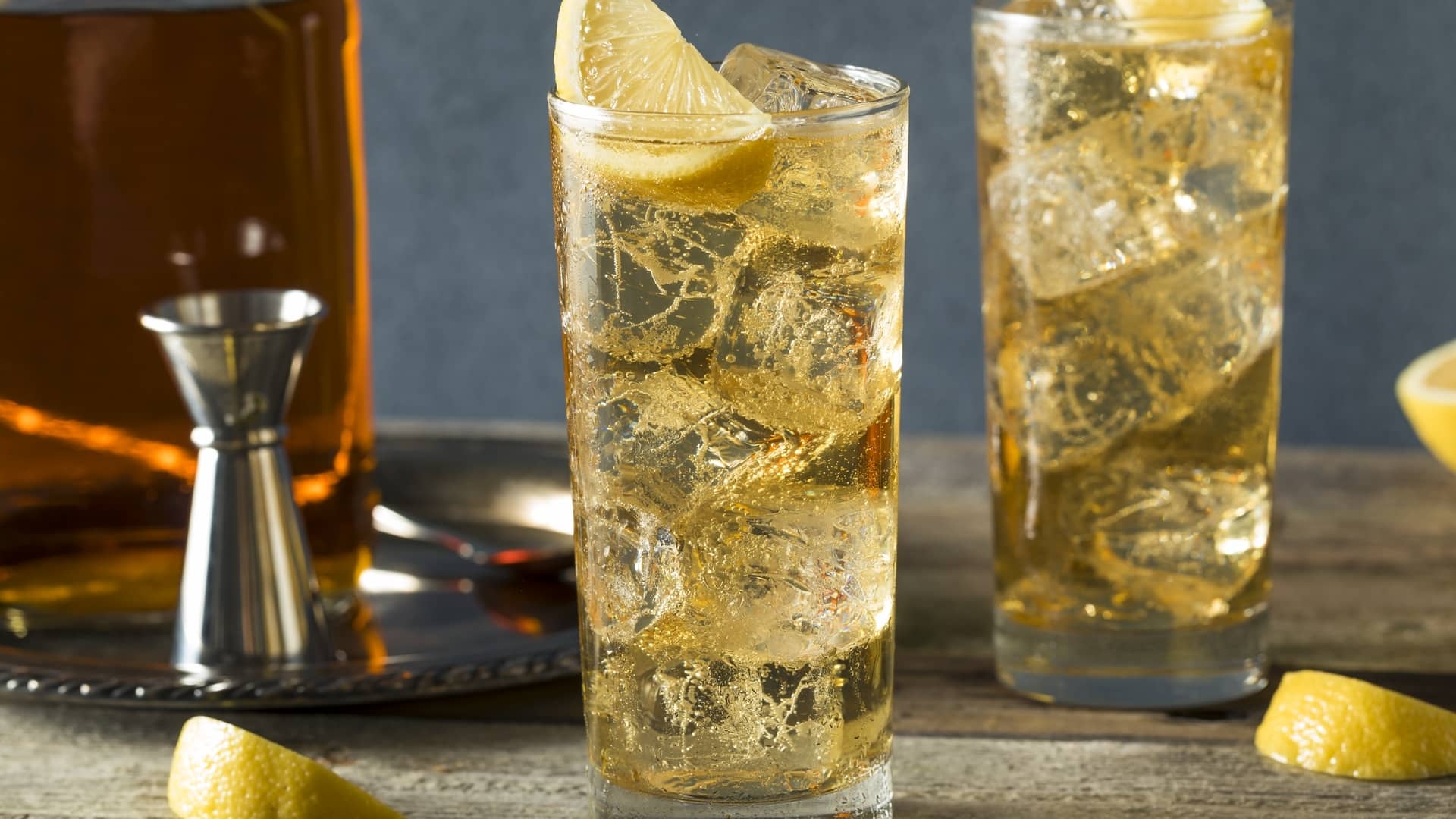Once a staple of clubs and bars, the whisky and soda spent the latter-half of the 20th century on the wrong side of fashion. The popularity of clear spirits coupled with a curious belief that mixing whisky is a near-criminal act saw the serve relegated to the back bench. At least that was the case in Britain – in Japan, the humble highball became a religion. The bracing combination of fruity, flavoursome whisky combined with lots of ice and freezing cold soda water is served up and down the country. It’s meticulously assembled by bartenders in high-end cocktail bars, it’s served on draught in rowdy Izakaya, and sold in vending machines in train stations. The highball is so popular that it caused global shortage of Japanese whisky from which the industry is still recovering. So, despite what the never-mix-whisky brigade might claim – there is clearly something to the whisky soda.
In fact, it has a great many virtues: It’s low in calories, allergy friendly, excellent with food, and easy to prepare. Far from disrupting the essential character of a nice whisky, the presence of a bit of fizz can unlock and elevate certain characteristics. The minerality of the soda cuts the richness of the whisky and the extra water content lets fruity and floral aromas really shine. Better yet, the effervescence carries aroma in the same way the bubbles in a glass of sparkling wine do, lifting them above the top of the glass and into the air. No wonder that in its heyday, the whisky and soda was a favourite of such famous brits as Winston Churchill and James Bond, who over the course of Ian Fleming’s works orders more highballs than he does Martinis.
Well, there aren’t and prizes for guessing that a whisky and soda has two main components at its heart. Like all simple recipes, it’s about having good quality ingredients and putting them together in the right way. You will need:
50ml whisky
100-150ml soda water
The art of pouring
Fill a tall, slim glass to the brim with ice and pour in your whisky. Stir it a few times with a barspoon or any suitable implement from the cutlery drawer to chill it down. Soda water is best in small bottles or cans as they guarantee you won’t be let down by a flat highball. Keep them in the fridge to make sure everything is nicely chilled come cocktail o’clock. Pour the soda slowly over the ice to maintain the bubbles. If it looks like the whisky is resting at the bottom of the drink give it another gentle stir to combine before topping it off.
You can scale this recipe down if you want a lower octane highball, just be sure to maintain a 1:2 or 1:3 ratio depending on how stiff you want the drink to be. A strip of lemon or orange zest on the top of the glass brings a nice sense of acidity, a sprig of mint or slice of cucumber will lend freshness.
Whisky and soda may be the classic, but broadly speaking a highball is just spirit and something fizzy. Scotch and ginger beer with a wedge of lime, known in the trade as a Mamie Taylor, is a superb drink. The great whisky writer Dave Broom advocates a heretically delicious serve of equal parts Lagavulin 16-Year-Old single malt and Coca Cola – the ‘smokey cokey’. These more experimental approaches may disgruntle the whisky purists but in my view they help demystify it and make it work for drinkers in a broader range of situations.
Choosing the right whisky
From light and summery to rich and robust, there’s no spirit in the world as varied as whisky. Different profiles will make for highballs with different qualities, so there’s a whole spectrum to explore. The only things that might be harder to balance are whiskies that show a lot of rich Sherry cask influence and American styles like Bourbon. Likewise, probably don’t use the 40-year-old Speyside malt you’ve been saving for retirement, that’s one to sip. Other than that, it pays to experiment with different whiskies to find the one that’s right for you. These are some great options to get you started.
Compass Box Great King Street, 43% (£37 – Direct)
A superb Scotch from boutique blenders Compass Box. John Glaser, the man behind Great King Street, recommends a variant on the classic highball served without ice. The iceless highball requires that whisky and glass are kept in the freezer and combined with chilled soda water immediately before serving. His recipe calls for 60ml whisky and 190ml soda (but if you eyeball 1:3 that will probably do the trick). It makes a great aperitif and a solid stand-in for a glass of Champagne, showing lots of apricot, red apple, honey, and vanilla.
Glenmorangie X, 40% (£27.95 – Master of Malt)
One of the great old Highlanders, Glenmorangie is betting on Highballs as the next big thing. This bright young expression is being billed as a malt designed for mixing. It’s got all the fresh orchard fruit and citrus the distillery is known for, with some active oak suppling spice and structure. Add a wedge of lemon and you could drink a Glenmorangie X highball in place of a nice cold beer. Being that it’s less filling than your average lager or IPA, it makes great backup for spicy food or barbecue.
Yamazaki Distiller’s Reserve, 43% (£68 – Waitrose)
The distillery that put Japanese single malt on the map, Yamazaki remains a singular character in the whisky world. While fundamentalists might balk at the prospect of serving such a dram long, it’s worth remembering that the highball is a way to show a whisky in a different light. It’s an alternative, not an instead of. Anyway, a Yamazaki highball should be enough to convert any whisky ultra or soda-phobic. It’s a deeply complex drink, richly aromatic and evocative of strawberry, cedar, orange, and coconut. Perfect for sipping on a mild, Indian summer evening.
Talisker 10 Year Old, 45.8% (£42.95 – The Whisky Exchange)
Fans of peated whisky will find lots to enjoy in the combination of soda water and smoky malt. The mineral quality of the mixer speaks to Talisker’s coastal profile while the carbonation lifts that campfire smokiness. The one works better served a little shorter, somewhere in the region of 1:2 or 1:1 and as such nicely fits the role of an after-dinner cocktail. Orange peel is a natural garnish that illuminates some toffee and ginger on the palate.







Comments